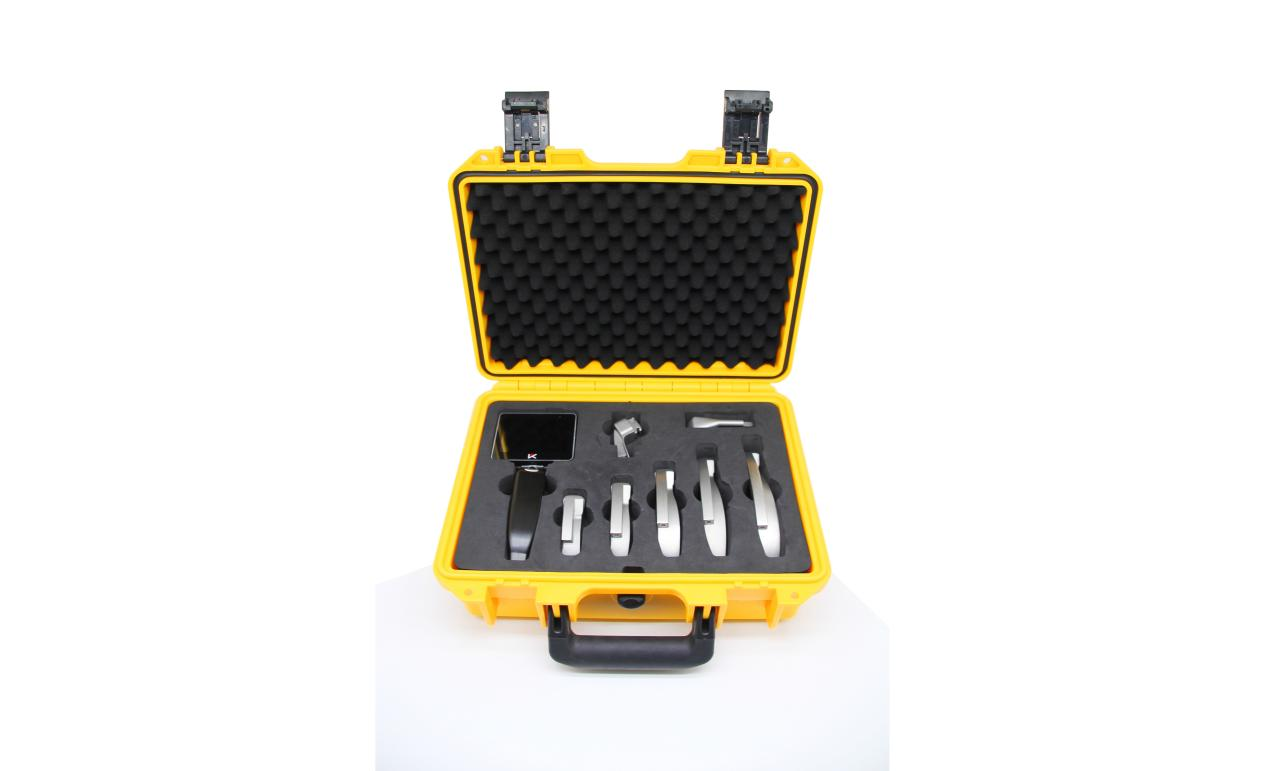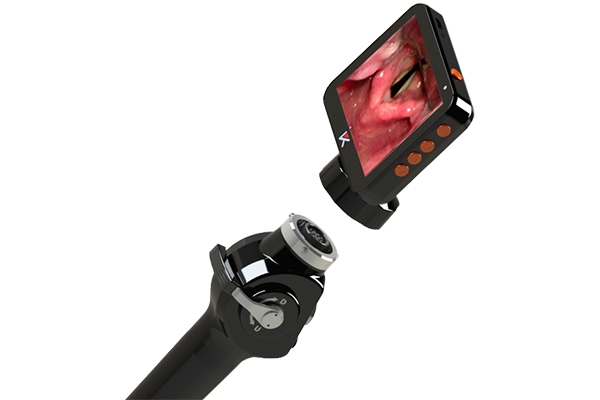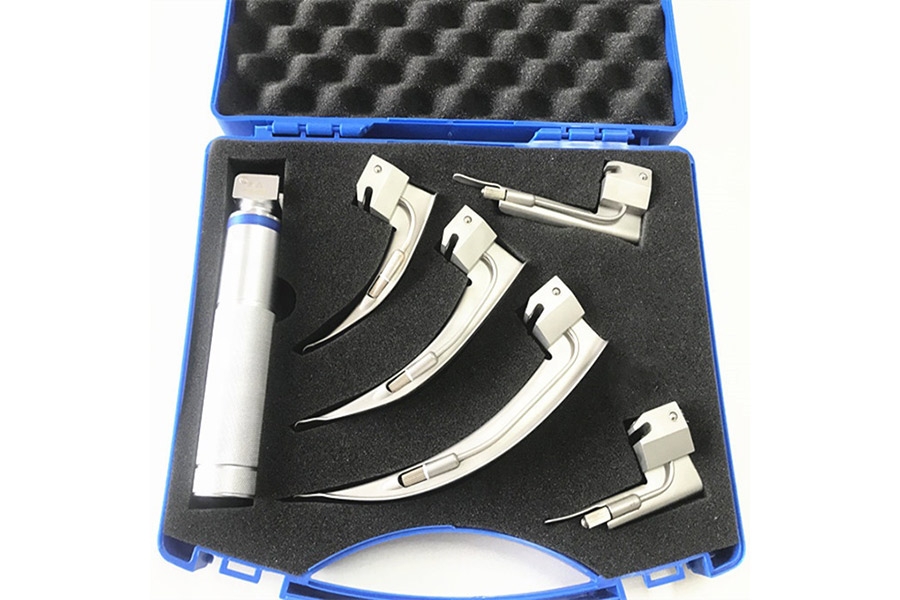Essential Guide to Intubation Blades | Medical Use
Dec 21, 2023
Intubation blades are an essential medical tool used for intubation procedures. They play a crucial role in facilitating the insertion of endotracheal tubes or other airway devices, ensuring airway management during anesthesia, emergency care, or other medical emergencies. Having the right type of intubation blade is crucial to increase the success rate of these critical procedures.
Key Takeaways:
- Intubation blades are an essential tool for airway management during medical procedures.
- The selection of the right type and size of intubation blade is crucial to increase the success rate of the procedure.
- Proper maintenance and care practices should be followed to ensure the longevity and safety of intubation blades.
- Choosing a reliable supplier is essential to secure a consistent supply of high-quality intubation blades.
- Reviews and recommendations can assist in selecting the most suitable intubation blade model for specific medical needs.
Understanding Intubation Blades: Types and Sizes
Intubation blades are essential medical instruments used in various procedures to enable proper breathing. These blades come in different types and sizes to accommodate various patient sizes and anatomies. Understanding the different options available is crucial in ensuring successful intubation procedures.
Types of Intubation Blades
The most common types of intubation blades are Macintosh, Miller, and D-Blade. Macintosh blades have a curved shape that aligns with the shape of the tongue, while Miller blades are straight and provide a better view of the airway’s opening. D-Blades have a unique design that facilitates successful intubation in difficult airway cases.
Sizes of Intubation Blades
Intubation blades come in various sizes, ranging from 0 to 4. The size used depends on the patient’s anatomy, with size 0 being the smallest and size 4 being the largest.
The choice of intubation blade size depends on the patient’s age and size, with children requiring smaller blades than adults. Using the wrong size blade can lead to difficulty in visualizing the airway or even injury to the patient.
Overall, understanding the types and sizes of intubation blades is critical in performing successful intubation procedures. By selecting the appropriate blade for the patient’s anatomy and needs, healthcare professionals can ensure optimal patient care and safety.
Features to Consider in an Intubation Blade
When selecting an intubation blade, healthcare professionals should consider several features that can impact the success of the procedure. One critical aspect is the blade design, which can affect the visibility and accessibility of the patient’s airway. A well-designed blade must provide adequate illumination to reduce the risk of injury and ensure accurate placement of the endotracheal tube.
Additional features to consider include handle ergonomics, as the instrument’s grip and weight distribution can impact user comfort and control. Furthermore, blade curvature can impact the ease of intubation and may vary depending on the patient’s anatomy.
Finally, intubation blades with reusable or disposable light sources are also available in the market. These innovative features provide added precision and control during the procedure, streamlining the intubation process and enhancing patient outcomes.
Materials Used in Intubation Blade Manufacturing
Intubation blades are critical medical instruments used in various procedures, such as endotracheal tube insertion, to ensure airway management and proper ventilation. The material used in manufacturing the blade is a crucial factor that determines its effectiveness, safety, and durability.
The most commonly used materials for intubation blade manufacturing are stainless steel, titanium, and plastic. Stainless steel is widely preferred due to its high strength and reliability, making it suitable for repeated use without deformation or fatigue. Titanium, while more expensive, is highly resistant to corrosion, hypoallergenic, and lightweight, making it an excellent alternative for individuals with Nickel allergies or frequent travelers.
Plastic blades are considerably cheaper and lighter, making them disposable alternatives for one-time use procedures. They are also easy to use and dispose of, reducing the risk of contamination and infection. However, their flexibility and strength are lower than metal alternatives, making them unsuitable for more advanced procedures.
When evaluating the material used in intubation blade manufacturing, it is crucial to consider factors such as durability, hygiene, ease of cleaning, and availability. Ultimately, the right choice will depend on the frequency of use, the specific procedure, and the preferences of the healthcare provider.
Evaluating Intubation Blade Suppliers

When it comes to sourcing intubation blades, the reliability and credibility of the supplier are critical factors to consider. With so many suppliers available in the market, it can be challenging to separate the reputable ones from the rest.
One way to evaluate the competence of an intubation blade supplier is to assess their reputation. Look out for suppliers with a long-standing presence in the medical industry, accompanied by positive feedback from previous customers. Such suppliers are more likely to have a track record of providing high-quality products and services.
Another essential factor to consider is certifications. Reputable suppliers should have the necessary certifications proving that their products comply with the required standards and regulations. These certifications include the CE mark, FDA approval, and ISO certification.
Customer reviews are also an important source of information when evaluating intubation blade suppliers. Feedback from previous customers can provide valuable insights into the quality of the supplier’s products, as well as their customer service and support.
By paying attention to the reputation, certifications, and customer reviews of intubation blade suppliers, readers can make informed decisions when selecting a supplier. Remember that sourcing high-quality products and support from a reputable supplier is critical to ensuring successful medical procedures and patient safety.
Selecting the Best Intubation Blade: Reviews and Recommendations
Choosing the right intubation blade is crucial for successful medical procedures. With countless models available in the market, it can be challenging to determine which one will best suit your needs. To help guide your decision-making process, we have compiled a list of popular intubation blade models and provided reviews and recommendations based on user feedback, performance, and overall quality.
Macintosh Blade: Widely considered the gold standard in intubation blades, the Macintosh blade features a curved design that facilitates successful intubation even in difficult patients. With a durable stainless steel construction and a range of sizes available, the Macintosh blade is a reliable choice for medical professionals.
Miller Blade: Ideal for patients with short necks or limited mouth openings, the Miller blade is a straight design that provides excellent visualization of the larynx. With a user-friendly design, the Miller blade is easy to manipulate, making it an excellent choice for trainees or less experienced medical professionals.
Fiber Optic Blade: Equipped with a fiber-optic light source that enhances visualization, the Fiber Optic Blade is an excellent choice for procedures where lighting may be limited. Additionally, the angulated design allows for greater flexibility and control during intubation.
Wisconsin blade: This blade has a pre-curved style with a blade tip in the same plane as the handle. It perfectly combines the strengths of the Macintosh blade with the Miller blade, making it an ideal choice for a wide range of intubation procedures.
No matter which intubation blade you choose, it is crucial to consider factors like patient anatomy, procedure requirements, and your level of experience to ensure successful intubation. With the right blade and thorough training, medical professionals can perform safe and effective intubation procedures.
Maintenance and Care for Intubation Blades
Proper maintenance and care are crucial for ensuring the longevity and safety of intubation blades. These essential medical instruments should be cleaned, sterilized, and stored correctly to prevent contamination and damage.
When cleaning intubation blades, it’s important to avoid abrasive chemicals or scrubbing implements that can damage the surface. Instead, use a soft cloth or brush and a mild detergent to wipe away debris and stains. Thoroughly rinse the blade with water and allow it to air dry or dry with a clean cloth.
Sterilization of intubation blades is typically achieved through autoclaving, a process that uses high-pressure steam to kill bacteria and other microorganisms. Be sure to follow the manufacturer’s recommended sterilization protocol, including any specific temperature or time requirements.
When storing intubation blades, it’s essential to keep them in a clean, dry, and secure location. Avoid stacking or compressing the blades, which can cause damage or dull the cutting edge. Consider using individual blade covers or dedicated storage trays to keep the blades organized and protected from exposure to contaminants.
Regular maintenance and care of intubation blades are critical for ensuring their reliability and safety during medical procedures. By following proper cleaning, sterilization, and storage guidelines, healthcare professionals can maintain the integrity of these vital medical instruments.
Conclusion
In conclusion, selecting the right intubation blade is critical for ensuring successful medical procedures and improving patient outcomes. It is essential to consider factors such as blade design, size, materials, and handle ergonomics when choosing the right intubation blade. Additionally, it is crucial to select a reliable supplier, and to properly maintain and care for the instrument to guarantee its longevity and safety.
By following the guidelines and recommendations outlined in this article, medical professionals can make informed decisions when selecting and utilizing intubation blades, ultimately improving quality of care and enhancing patient safety.
Categories
Latest Articles

Affordable Bronchoscope: Price, Features, and What to Expect
The Role of Bronchoscopes in Modern Medicine A bronchoscope is an important medical tool. Doctors use it to look inside the lungs and airways. It helps diagnose infections, tumors, and other lung problems. It is also used to remove blockages and take tissue samples. Hospitals and clinics rely on bronchoscopes for many procedures. A clear ... Read more

Laryngoscope mole Fiber optic: A Clearer View, A Safer Airway
The Laryngoscope mole Fiber optic is a tool for airway management. It helps doctors see inside the throat. It has a fiber optic system that gives a bright and clear view. Doctors use it to guide breathing tubes into the airway. It makes intubation easier and safer. This laryngoscope works with different blades. The Miller blade ... Read more

CE Get√ Disposable bronchoscope and Disposable uroscope!
CE Get√disposable bronchoscope and disposable uroscope!Factory direct sales. Welcome to inquire. OEM is available.

Mole Medical invites you to meet at Expomed Eurasia 2025
Mole Medical invites you to meet at Expomed Eurasia 2025 Mole Medical sizi Expomed Eurasia 2025'te buluşmaya davet ediyor

Mole Medical invites you to meet the 91st China International Medical Equipment Fair (2025 Shanghai CMEF)
Dear partners at home and abroad:In the era of the booming development of global Medical technology, Mole Medical has always adhered to the original intention of innovation, and made intensive efforts in the field of medical endoscopes, constantly making technological breakthroughs and developing high-quality products. On this occasion, we cordially invite you to attend the ... Read more



